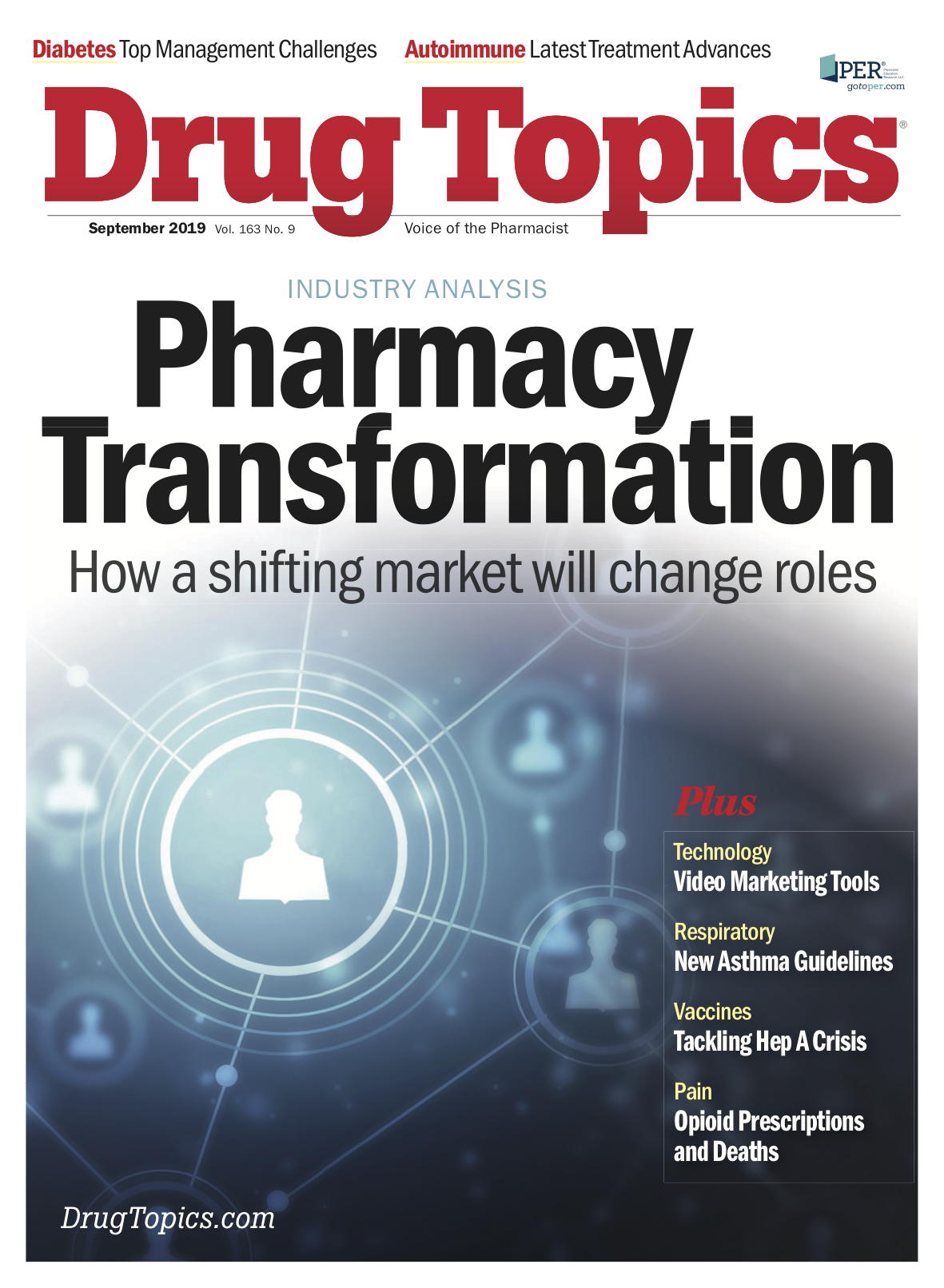Generics and Biosimilars Facing Formulary Difficulties
New changes are making it more difficult for generics and biosimilars to compete on formularies.

Louis Tharp

Craig Burton

For decades, generic drugs were an effective and less costly option for patients, but new changes in the market are making it more difficult than ever for generics and biosimilars to successfully compete on formularies.
“Generics are a threatened species right now and that goes double for biosimilars,” says Louis Tharp, executive director and co-Founder of the Global Healthy Living Foundation and CreakyJoints.
Experts note a significant shift in the marketplace that has led to more generic drugs getting placed on higher formulary tiers-significantly increasing copay amounts for patients. Branded manufacturers also deploy a series of strategies, such as the use of rebates, to try to limit the reach of new generic products.
Trending: The 10 Apps Pharmacists Should Be Using
“Generally, what we have been observing and hearing from members are increasing challenges in terms of formulary access, both with respect to older commoditized generics and newer generic launches,” says Craig Burton, vice president of policy for the Association for Accessible Medicines.
Fewer Generic Drugs on Tier 1
Research has shown a significant drop in the number of generic medications being placed on the lowest formulary tiers in recent years. Some believe the trend is driving up patient costs and making it increasingly difficult for generics to compete.
According to a recent Avalere survey examining Medicare Part D trends of generic drugs, researchers found that in 2011, 71% of generic drugs were placed on tier 1; but by 2015, only 19% of covered generic drugs were placed on tier 1. It was much more likely in 2015 that generic drugs would be placed on tier 2 (46%) or tier three or higher (35%).
This 53% drop in the number of drugs placed on the lowest tier also translated to a $6.2 billion increase in the total patient cost sharing for the same drugs.
One potential reason for the significant jump in patient cost-sharing could have been attributed to increased utilization; however, Avalere found that during this time period utilization only increased by about 20%. In addition, the price of generic drugs assessed only increased by 1% during the same period.
“The result was pretty clear-this is simply plans shifting generic drugs to tiers with higher copays, mixing them in on branded drug tiers with higher copays and seniors not receiving the full value of those generics,” Burton says.
Just this year, Avalere released a new analysis of Medicare Part D generic trends and found that between 2016 and 2019, generic drugs were placed on the lowest tier 14% of the time.
Burton says since research seems to indicate that the trend of placing generic drugs on branded tiers with higher copays does not appear to be driven by the price of generics, the association has had to consider other possibilities for the change in practices.
The emerging assumption is that higher brand drug costs are driving greater co-pays across the board, he says.
Continue reading on page 2...
A 2019 Johns Hopkins University study published in JAMA Internal Medicine, analyzed 57 Medicare Part D formularies and found that 72% placed at least one branded drug in a lower cost-sharing tier than its generic product. In addition, 30% of the formularies adopted fewer utilization controls on the branded product compared to its generic counterpart.
“That should be economically impossible,” Tharp says.
Entrance Challenges
Older generics aren’t the only ones finding it difficult to compete in today’s marketplace. New generic or biosimilar launches are also finding it difficult to gain a share of the market-often due to brand rebates that drive down the overall cost of a branded competitor.
“A number of new generic launches are seeing significant challenges to even being available to patients because they are being excluded from formularies presumably as a result of brand drug rebate agreements that are conditioned on the exclusion of the generic competitor,” Burton says.
In general, he says one of the problems is the lack of transparency about what happens to rebate money or what effect these rebates really have on formularies.
Lack of access may be hindering medication affordability-a problem for high-cost conditions, such as diabetes. According to the American Diabetes Association, three follow-on biologic insulins have been approved by the FDA, and two are available for sale in the United States. These drugs are priced about 15% lower than their original version; however, none of the follow-on biologic insulins have been approved as substitutable or interchangeable, making their use more difficult.
Read More: What Triggers Shingles?
“The ADA recommends the FDA continue its efforts to encourage additional competition within the insulin landscape, including fostering biosimilar competition,” they wrote in public policy statement addressing the rising costs of insulin and strategies to lower insulin costs.
Increasing the Ability To Compete
The FDA announced steps to encourage biosimilars and more affordable brand insulin starting in 2020, but according to a white paper released by the Biosimilars Council, several barriers need to be addressed that could limit patient access to biosimilar insulin forms.
To improve biosimilar access to formularies, the council recommends that policymaking by the FDA, CMS, and Congress should ensure that rebates and “formulary gamesmanship” doesn’t prevent patient access to biosimilars. In addition, removing regulatory barriers to competition, rethinking the use of rebates and increasing patent transparency could aid in improving competition, the council contends.
Burton says the Association for Accessible Medicines has proposed several possible steps to CMS that could improve generics access to formularies. For instance, the association believes that generics should automatically be placed on generic tiers when they are launched and should no longer be co-mingled on tiers with branded drugs.
Tharp says it’s important to remember that PBMs are simply trying to succeed in the capitalist system the country has created.
“There aren’t any solutions to this,” he said. “We have to sit down and seriously change the structure, and in the process, we cannot kill insurance companies, drug companies, PBMs, hospitals, (or) doctors.”
Continue reading on page 3...
Tharp believes policy efforts that make sweeping moves to eliminate rebates entirely-like the proposal by President Trump to eliminate drug rebates in Medicare and Medicaid-fail to take into consideration the complexity of the current system.
“You can’t just say the rebate rule is gone because that’s a major profit center for PBMs. In the current system we need PBMs, and they are only doing what the system allows them to do,” he says.
Trump’s proposal was withdrawn in July after receiving significant backlash from insurers and hospitals.
Read More: The 25 Cities with the Highest Pharmacist Salaries: 2018
Although it may not be easy, Tharp says he remains optimistic that if the country as a whole slows down and reconsiders its current healthcare philosophy, it may be possible to reverse current trends and once again appreciate the value that generics can play in the marketplace.
Drug Topics reached out to CVS Caremark, Express Scripts, and Optum RX to try to learn more about how PBMs made their formulary decisions, but did not receive a response.
